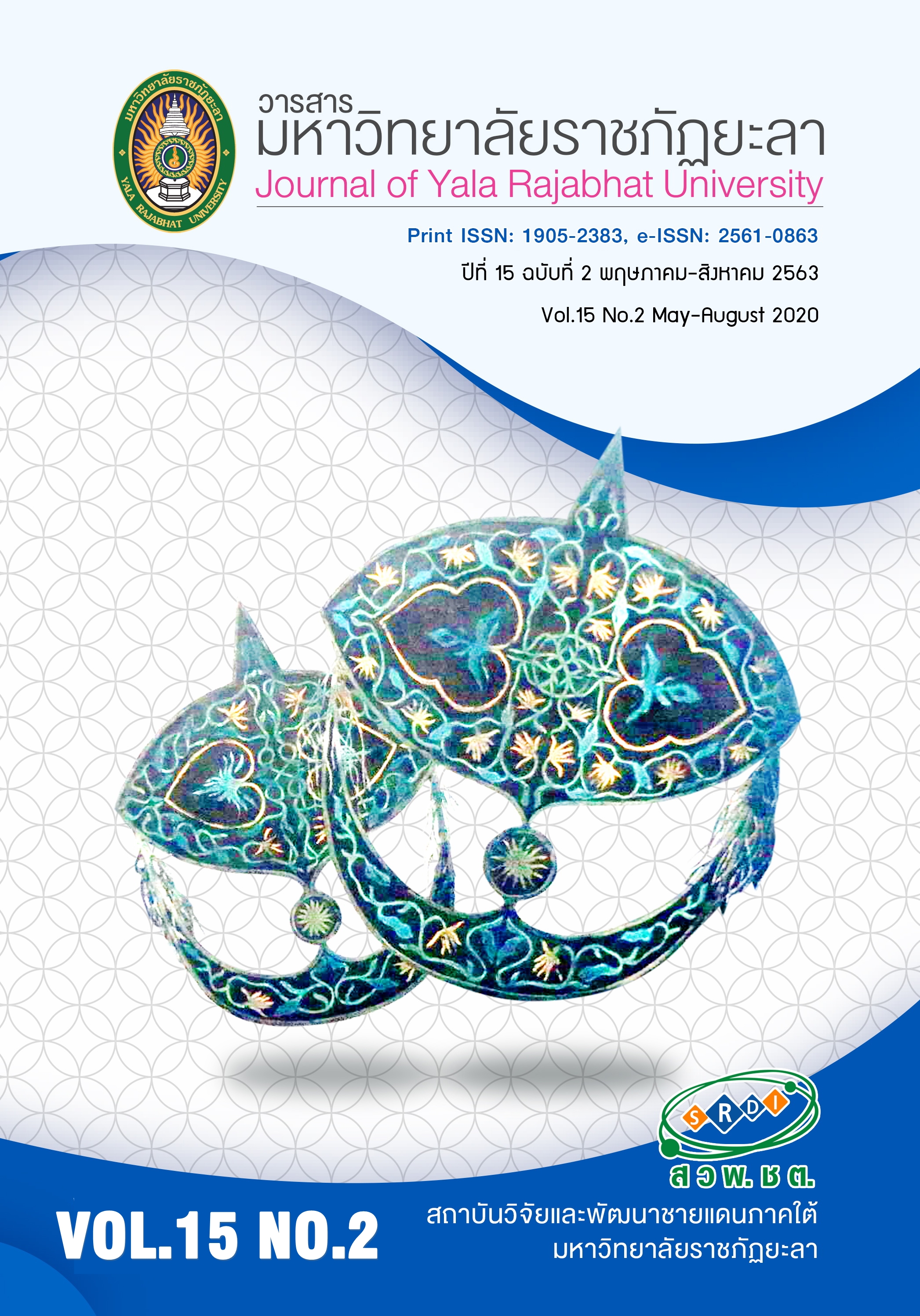ความสัมพันธ์เชิงสาเหตุของปัจจัยที่ส่งผลต่อการรู้เรื่องสถิติของนักศึกษาปริญญาตรีมหาวิทยาลัยกรุงเทพ
Main Article Content
บทคัดย่อ
การวิจัยครั้งนี้มีวัตถุประสงค์เพื่อตรวจสอบโมเดลการวัดการรู้เรื่องสถิติ และโมเดลความสัมพันธ์เชิงสาเหตุของปัจจัยที่ส่งผลต่อการรู้เรื่องสถิติของนักศึกษาปริญญาตรี มหาวิทยาลัยกรุงเทพ ตัวอย่างที่ใช้ในการศึกษา คือ นักศึกษาระดับปริญญาตรี มหาวิทยาลัยกรุงเทพ จำนวน 357 คน ได้มาโดยการสุ่มตัวอย่างแบบแบ่งชั้นภูมิ เครื่องมือที่ใช้ในการวิจัย คือ แบบสอบถามการรู้เรื่องสถิติที่มีค่าความเชื่อมั่นเท่ากับ .85 และแบบทดสอบความรู้ที่มีค่าความเที่ยงเท่ากับ .58 วิเคราะห์ข้อมูลโดยใช้สถิติเบื้องต้น การวิเคราะห์สหสัมพันธ์ การวิเคราะห์องค์ประกอบเชิงยืนยัน และการวิเคราะห์อิทธิพลเชิงสาเหตุ ผลการวิจัยพบว่า 1) โมเดลการวัดการรู้เรื่องสถิติของนักศึกษามีความสอดคล้องกับข้อมูลเชิงประจักษ์ โดยองค์ประกอบที่มีน้ำหนักองค์ประกอบมากที่สุด คือ ความรู้ รองลงไป คือ องค์ประกอบลักษณะนิสัย และทักษะ ตามลำดับ 2) โมเดลความสัมพันธ์เชิงสาเหตุของการรู้เรื่องสถิติของนักศึกษามีความสอดคล้องกับข้อมูลเชิงประจักษ์ ตัวแปรทั้ง 3 ตัว ส่งผลต่อการรู้เรื่องสถิติของนักศึกษาอย่างมีนัยสำคัญทางสถิติที่ระดับ .01 โดยการมีประสบการณ์กับสถิติมีอิทธิพลทางตรงเชิงบวกต่อการรู้เรื่องสถิติของนักศึกษามากที่สุด รองลงไป คือ การใช้เทคโนโลยีในการเรียนสถิติ และการมีประสบการณ์กับวิจัย ตามลำดับ
Article Details
บทความ ข้อมูล เนื้อหา รูปภาพ ฯลฯ ที่ได้รับการเผยแพร่ในวารสารมหาวิทยาลัยราชภัฏยะลานี้ ถือเป็นลิขสิทธิ์ของวารสารมหาวิทยาลัยราชภัฏยะลา หากบุคคลหรือหน่วยงานใดต้องการนำทั้งหมดหรือส่วนหนึ่งส่วนใดไปเผยแพร่ต่อหรือกระทำการใดๆ จะต้องได้รับอนุญาตเป็นลายลักษณ์อักษรจากวารสารมหาวิทยาลัยราชภัฏยะลาก่อนเท่านั้น
References
2. Gal, I. (2012). Adults' statistical literacy: Meanings, components, responsibilities. International Statistical Review, 70(1), 1-51.
3. Martinez-Dawson, R. (2010). The effects of a course on statistical literacy upon students’ challenges to statistical claims made in the media. South Carolina: Clemson University Tiger Prints.
4. Nasser, F. M. (2015). Prediction of college students achievement in Introductory statistics course [Online]. Retrieved April 8, 2018, from: https://researchgate.net/publication/228992927.
5. Nikiforidou, Z., Lekka, A. & Pange, J. (2010). Statistical literacy at university level: The current trends. procedia- social and behavioral sciences, 9, 795-799.
6. Paitoon, K. (2017). The context and the need to develop competencies of mentor teachers enhancing mathematics learning in the 21st century. Journal of Yala Rajabhat University, 12(2), 107-121. (in Thai)
7. The Institute for the Promotion of Teaching Science and Technology (IPST.). (2017). Reports on TIMSS 2015 and PISA 2015 Evaluation [Online]. Retrieved December 7, 2016, from: http://www.ipst.ac.th/index.php. (in Thai)
8. Watson, J. M. (2007). Statistical literacy at school: Growth and goals. International Statistical Review, 75(2), 259. doi: 10.1111/j.1751-5823.2007.00015_12.x
9. Wiratchai, N. (1999). Lisrel: Statistical analysis for research. (3rd ed.). Bangkok: Chulalongkorn University Printing. (in Thai).
10. Yotongyos, M., Traiwichitkhuna, D. & Kaemkatea, W. (2015). Undergraduate students’ statistical literacy: A survey study. Procedia - Social and Behavioral Sciences, 191, 2731-2734.

